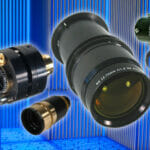~ How to keep production going when parts become outdated ~
Obsolescence is a word that induces anxiety for many an engineer. As the world turns, technology advances, standards develop and regulations evolve, with new generations pushing the previous devices and techniques into obscurity. Here, Shaun Findley, European product director at cables and connectors distributor PEI-Genesis, discusses how choosing the right component supplier can dramatically reduce the pressure felt when vital parts reach the end of their working lives.
There are several reasons a part becomes obsolete. The immediately obvious reason is when a superior model supersedes an existing part. For instance, flat-screen monitors replacing cathode-ray tubes. Other reasons include changing regulations or standards, as well as redesigns by the manufacturer. Fundamentally, a part becomes obsolete when it is no longer available from the original component manufacturer (OCM).
For highly regulated sectors including aerospace, military and medical, obsolescence can leave original equipment manufacturers (OEMs) non-compliant with regulatory standards. It also makes repairs and maintenance more difficult because like-for-like parts may not be available, or the technical support that comes with them. What’s more, parts that reach their end-of-life after prolonged use in extreme environments may degrade in performance or pose a safety risk.
This is where the challenge for engineers rears its head. Modern applications may include tens of thousands of components from potentially thousands of disparate suppliers. Attempting to manage obsolescence and upgrade outdated equipment in such a diverse portfolio can quickly become dizzying.
A choice of pickers
OEMs can take some proactive measures to manage obsolescence by auditing their components and understanding the lifecycle of the part. This might involve carrying out a risk analysis of parts that could become obsolete in the near future and working to secure stock of these from a reliable supplier.
At PEI-Genesis, our customers can check parts availability in real-time by uploading a parts-list spreadsheet using the search function on our website. This automatically checks a database of over 15 million products for availability and whether any parts have end-of-life (EOL) or last-buy notices. If the part isn’t available from one supplier, our dual-supplier status means we may be able to offer the same part from a different supplier.
Even if customers need to redesign or re-engineer parts, our unique business model means we hold over $100m dollars of inventory in component form, allowing us to build millions of combinations of products using these parts. Thanks to a highly automated manufacturing process, we can offer lead times of just 48-hours and a minimum order quantity of just one.
While it does require some consideration, obsolescence doesn’t have to cause anxiety. Mitigating the impact that obsolete parts have on the product quality, production uptime and safety of our customers is priority number one.








